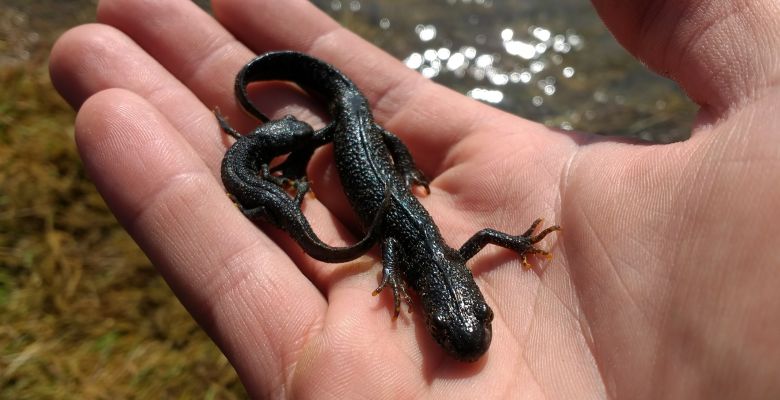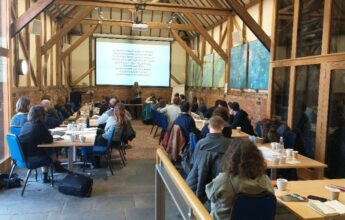
Protection
Great crested newts are protected under:
- The Wildlife and Countryside Act 1981 (as amended).
- The Conservation of Habitat and Species Regulations 2010.
When do I need to get in touch?
A site’s potential to support great crested newts is usually identified within a Preliminary Ecological Appraisal / Extended Phase 1 Habitat Survey combined with a data search. Great crested newts breed in waterbodies such as ponds and ditches, but spend the majority of the year on land and can move a considerable distance from breeding ponds and waterbodies, up to 500m. This means that great crested newts can be present on a range of sites and habitats that at first glance may look unsuitable, including most types of grasslands, woodlands, within hedgerow and tree corridor networks, and even within the built environment and brownfield sites, especially where rubble piles are present.
EcoNorth applies detailed guidelines to establish whether great crested newts have the potential to be present. A ‘Habitat Suitability Index’ (HSI) assessment for great crested newts can be completed as a standalone, or more appropriately in combination with a Preliminary Ecological Appraisal / Extended Phase 1 Habitat Survey, in order to assess the probability of great crested newts utilising a site. HSI assessments follow guidance from the Amphibian and Reptile Groups of the United Kingdom, which was set out in 2010.
This assessment will establish whether further surveys are required to identify the presence or absence of great crested newts.
To prevent delays in your project it’s important to get in touch as early as possible, as great crested newt surveys and mitigation measures are highly seasonal.
How can EcoNorth help me?
EcoNorth can advise you on great crested newt legislation and provide pragmatic approaches to establishing great crested newt presence or absence, and required mitigation where the species is recorded. We undertake all types of great crested newt surveys, and can guide you through the European Protected Species licensing procedure. We apply current best practice guidelines set out by Natural England and Froglife, along with our in-depth knowledge of great crested newts, habitat requirements, and present results and recommendations in our detailed professional reports to inform and support your project’s planning application or other consenting process.
Our great crested newt licensed ecologists can conduct ‘presence/absence great crested newt surveys’ from mid-March to June. Under current guidelines, 4 separate visits are required, including 2 within the main egg laying period of mid-April to mid-May. If great crested newts are recorded during any of the 4 surveys, an additional 2 surveys are required to satisfy current survey guidelines, and to establish a ‘population class estimate’ of the species.
Full great crested newt surveys, or eDNA surveys?
‘eDNA’ (or environmental DNA) surveys are a relatively new alternative to full great crested newt surveys, and are respected by Natural England and for planning purposes. EcoNorth’s licensed ecologists are able to undertake eDNA surveys at your site. This involves taking water samples from waterbodies between mid-April and June for laboratory analysis to detect trace amounts of great crested newt DNA.
This technique can be used to avoid full great crested newt surveys should eDNA surveys not detect great crested newt DNA within waterbodies on site. However, you must ensure that a great crested newt licensed ecologist has taken water samples and that Natural England’s technical advice note has been followed – this is a procedure that EcoNorth thoroughly abides by.
Please be aware that should eDNA surveys detect great crested newt DNA, full great crested newt surveys will be required. Contact EcoNorth to determine whether eDNA surveys are appropriate for your site.

